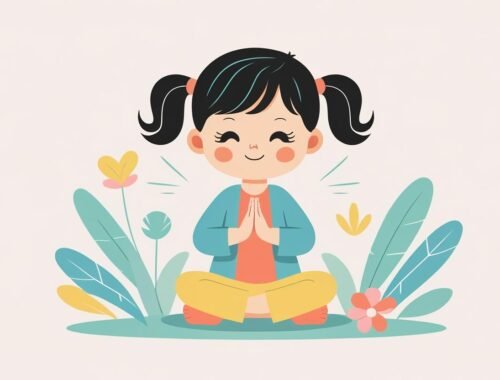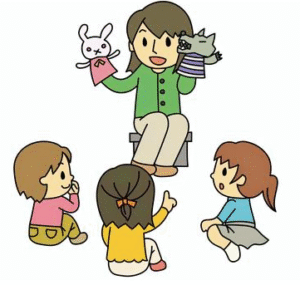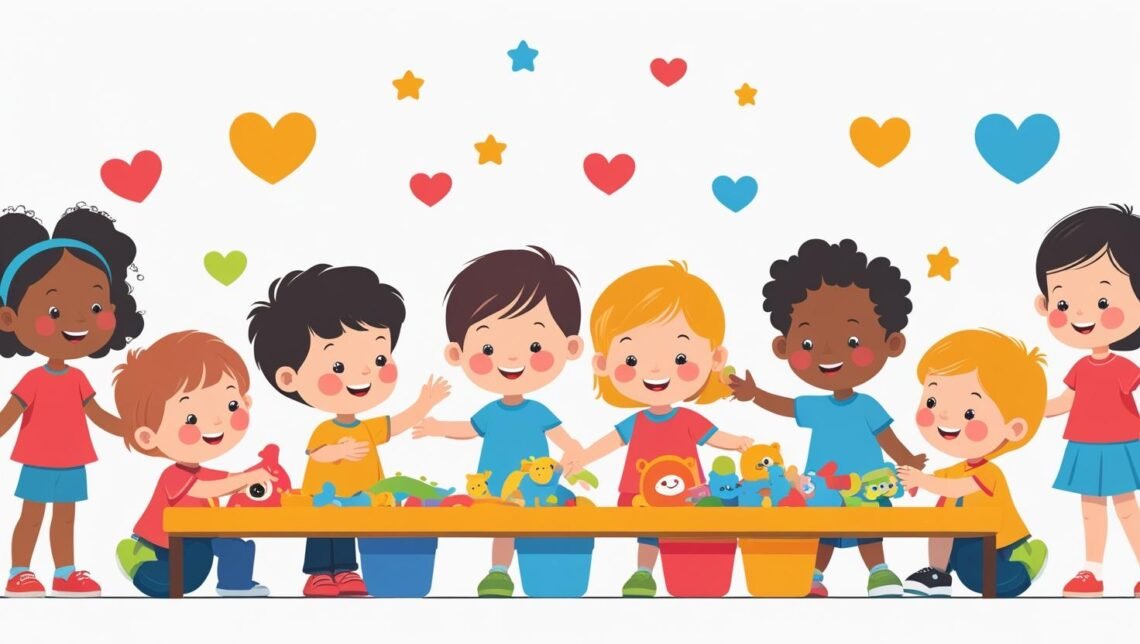
Emotional Intelligence: Teaching children about Social Skills
In the last post on Emotional Intelligence, I explored empathy and how it helps shape emotionally aware little humans. Today, we’re diving into the final piece of the puzzle—social skills

Social skills are at the heart of emotional intelligence in the preschool years. Things like sharing, taking turns, listening, and cooperating might seem simple, but they’re actually big developmental steps for young children. This is the age when kids are learning how to be part of a group, how to make friends, and how to handle tricky situations like disagreements. Strong social skills help them express their needs respectfully, play together peacefully, and build the foundation for lasting, positive relationships. These early interactions shape how they understand themselves and others—and that’s a big part of growing emotionally, too (Denham et al., 2003).
Social skills might sound like one tidy concept, but just like glitter, they tend to spread out into all sorts of directions. They come with their own set of subcomponents—like cooperation, communication, perspective-taking, self-regulation, conflict resolution, initiating and maintaining friendships, and assertiveness (yes, even the quiet ones have it in them!). I’m diving a bit deeper into each of these to explore how we can nurture them in our preschoolers. And of course, I’ll be sharing some real-life classroom moments—because nothing teaches you about conflict resolution quite like two four-year-olds arguing over who gets the blue playdough lid. it i

Cooperation
Cooperation is one of those magical preschool skills that can turn a room full of strong opinions and missing glue sticks into something that (usually) resembles harmony. It’s the ability to work and play with others—sharing materials without a meltdown, taking turns without a timer war, following directions, and actually contributing to group activities without trying to take over everything. In a preschool world filled with collaborative play and daily group routines, cooperation is essential. It helps children start to understand social expectations like “you can’t always go first” or “yes, everyone does want the blue scissors.” Beyond keeping the peace, cooperation lays the foundation for real teamwork, empathy, and the kind of flexible thinking that helps children become thoughtful, kind little humans (Denham et al., 2003; Rubin et al., 2006).
Some ways you can encourage cooperation:
- Group Art Projects – Have children work together on a mural or collage to promote turn-taking and shared responsibility. The same can be done within family setting by sharing different tasks within the project.
- Building Together – Use large blocks or LEGO sets for small group construction. Big floor puzzles are also a good way to encourage teamwork.
- Classroom/Home Jobs – Assign rotating responsibilities (line leader, snack helper) to teach cooperation through contribution. That can be done in classroom as well as in home setting rotating family members.
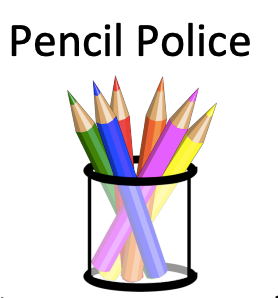
Experience:
When I think about the power of practical experiences in the classroom, I always think of Noah.
When Noah first joined our preschool room, he was quiet and a little unsure—one of those children who preferred to observe from the edges. He followed routines, but rarely volunteered or jumped in to help. So, I started small. One morning, I gently asked him, “Can you help me count how many friends are here today?” He nodded. No big speech, no spotlight—just quiet participation.
The next week, I invited him to help me carry the garbage bin to the hallway. Then it was handing out paper towels. Each task was simple, purposeful, and just right for his growing confidence.
As weeks went by, something shifted. Noah began seeking out responsibility. I overheard him tell another child, “I’ll set the table—you can get the markers.” Before long, he was managing the bathroom line like a tiny traffic controller and helping set up provocations at the art table without being asked. He’d even quietly coach others, showing them how to fold the painting smocks “the way the teacher does.”
From gentle prompting to self-initiated leadership. By giving Noah chances to take part in the daily rhythm of the classroom, he didn’t just learn new skills—he learned that he belonged, and that his contributions mattered. That’s the magic of involving children in meaningful, hands-on roles: it nurtures cooperation, independence, and quiet confidence that grows louder every day.

Communication
Communication in early childhood is so much more than just talking—it’s everything from saying “I need to pee” at the right moment, to understanding that a glare from across the room probably means put the marker down. It includes both verbal and nonverbal skills like expressing needs, listening (even when there’s a snack nearby), taking turns in conversation, and reading emotional cues and gestures. These abilities are the glue that hold early relationships together and are a big part of preventing those classic preschool misunderstandings—like thinking someone stole your toy when they were really just handing it back. Strong communication skills form the foundation for both social and academic success, long before a child ever writes a sentence or stands up for show and tell (Beaty, 2014; Hartup, 1992).nding gestures and emotional cues.
Some activities to try:
- “Show and Tell” Sessions – Give children opportunities to speak and listen in a supportive setting. This is a great way to help children to speak up in front of a group of people and share something about their life, whether it is a toy or a weekend adventure with family.
- Puppet Play – Use puppets to model conversational exchanges, greetings, and expressing needs. Puppets are always a great way to get children’s attention. Let the children name them too!
- Feelings Charades – Act out emotions and guess what others are expressing to build expressive and receptive communication skills. Set an example by joining in to show that it is okay to feel every feeling and, us adults, have them too.
Experience:
Show and tell is a familiar part of early childhood classrooms—usually filled with favorite toys or trinkets clutched in tiny hands. But this year, we decided to shift things a little. Instead of objects, we invited families to send in photos of real-life adventures—camping trips, zoo visits, trying new foods, or simply making pancakes on a Sunday morning.
That’s when Leo’s eyes lit up.
Leo had always been a bit reserved during circle time. He’d listen closely to others, but when it came time to share, he’d often pass or give one-word answers. Then one Monday morning, he tugged at my sleeve and whispered, “Did my mom send the picture of the boat?”
Sure enough, she had. A photo popped up on our classroom screen—Leo in a bright orange lifejacket, grinning from the side of a canoe. His whole face changed. He sat up straighter. “That’s me and my grandpa. I got to hold the paddle all by myself!” Suddenly, this quiet observer had become the storyteller, and the room was hanging on every word.
After circle time, we added his photo to our “Adventure Board”—a space placed right at children’s height so they could revisit and share their stories throughout the day. And Leo did. He walked his friends over to the board, pointed out the lake, answered questions, and even added new details each time.
What started as a small change in practice became a big shift in confidence, connection, and communication. For Leo—and many others—it wasn’t just show and tell anymore. It was sharing who you are, what you love, and finding out your story matters.

Perspective-Taking
Perspective-taking is the skill that helps children understand that other people have thoughts and feelings too—even if those thoughts are “I don’t want to play trucks right now” or “I actually do like the green cup.” For preschoolers, this doesn’t come naturally right away (surprise!)—it’s something they grow into through social interactions, gentle reflection, and lots of “How do you think they felt?” moments. When children begin to recognize someone else’s point of view or emotional state, they’re more likely to share, comfort, or offer help—not just because we told them to, but because they get it. It’s the beginning of true empathy and a huge step toward becoming kind, socially aware little humans (Eisenberg, Spinrad, & Morris, 2006; Brownell, Svetlova, & Nichols, 2013).
You can start by introducing:
- Story Time Discussions – Pause during stories to ask, “How do you think the character feels?” and “What would you do?”. Give children opportunity to be involved with the stories to develop their communication skills.
- Emotion Matching Games – Match facial expressions to scenarios or emotion cards to build emotional understanding. Great way to build vocabulary.
- Caring Acts Chart – Create a visual where children add stars when they do kind acts for others, reinforcing empathy through action.
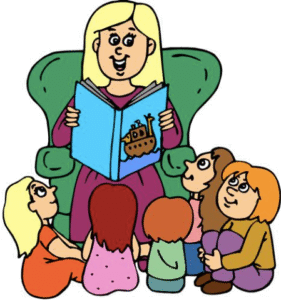
Experience:
Story time had always followed a familiar rhythm—teacher reads, children listen, and maybe a few questions come at the end. But one day, we decided to try something different. Instead of saving all the discussion for after the last page, we began inviting the children to join the storytelling throughout. We paused to ask, “Why do you think she did that?” or “How would you feel if that happened to you?” Suddenly, the stories became conversations—and the children leaned in closer.
It was during one of these moments that Ella surprised me.
Ella was a thoughtful child—always tuned in, but rarely the first to speak. When questions were asked during group time, she usually let others take the lead. But one day, mid-story, we paused to wonder why the main character had hidden their drawing from a friend. There was a quiet beat, and then Ella quietly said, “Maybe she thought her friend would laugh at it.”
A small comment. A big shift.
From that moment on, Ella began chiming in more often. Not always loudly, but with growing confidence. She started noticing tiny details—what a character was holding, how their face looked, how the colors changed on the page. Over time, that willingness to speak up during stories started to spill over into other areas: she began sharing her ideas during play, raising her hand during reflection time, even helping a friend retell a story at the art table.
All it took was making space—before the final page—for children to think, question, and explore different perspectives in real time. By giving Ella (and her peers) permission to wonder out loud, we weren’t just teaching literacy—we were nurturing voice, confidence, and deeper thinking, one page at a time.

Conflict Resolution
Conflict resolution is the magical-sounding ability to work through disagreements without anyone storming off, crying under a table, or chucking a toy across the room. In preschool, this skill doesn’t just appear—it’s built through modeling, guided play, and a whole lot of adult support (and deep breaths). It involves helping children use words to negotiate (“Can I have it when you’re done?”), express emotions without an eruption (“I feel mad, but I won’t hit”), and find fair solutions that don’t always end with “fine, you win.” These early conflict skills are absolutely essential—not just for classroom peace—but for building friendships, navigating group play, and surviving the great Play-Dough Dispute of snack time (Ramani & Brownell, 2014; Shure, 2001).
Try one of these activities:
- Problem-Solving Puppets – Use puppets to model conflicts and walk through “What happened? What could we do? What will we try?”
- Peace Table – Designate a spot for peers to sit and talk when disagreements arise, with visual guides or scripts.
- “Use Your Words” Visual Prompts – Display sentence starters like “I don’t like that…” or “Can we take turns?” to empower children to speak up respectfully. Don’t forget, that sometimes the children do not have necessary vocabulary developed yet.
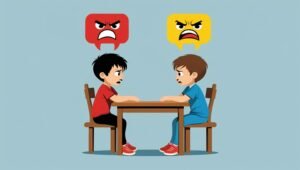
Experience:
One of the reasons I introduced a Peace Table in our classroom was simple: every conflict has at least two sides. And yet, in the rush of a busy preschool day, it’s easy for adults—myself included—to respond to the loudest voice or the tear-filled version of what happened. The Peace Table offers us all a pause button. A chance to walk through the full story, side by side.
One afternoon, I heard the familiar crash of blocks, followed by shouting. I turned the corner to find two children—Max, red-faced and yelling, and Nora, lips trembling, eyes full of tears. Instead of jumping into solution mode, I gently guided them to the Peace Table.
There, we used our talking stick—one of our classroom tools to help children take turns and truly listen. I reminded them, “When you’re holding the stick, it’s your turn to talk. When you’re not, your job is to listen.”
Max went first. He held the stick tightly and said, “She knocked down my tower and I got really mad.”
Then it was Nora’s turn. She looked down and quietly said, “I just wanted to help… but he didn’t let me. It made me sad.”
Right there, in that moment, everything shifted. The yelling and the tears made sense. We acknowledged both children’s feelings and asked them what they needed to feel better. Max said, “I just want her to say sorry.” Nora added, “And I want a hug.”
So they did. And they hugged. And then—because our work wasn’t done—we talked about what they could do next time to avoid getting to that shouting-crying place. Max agreed to use words when he needs space. Nora decided to ask, “Can I help?” before jumping in.
The Peace Table didn’t just solve the problem—it gave both children space to feel heard and take ownership of their part. And it reminded me, once again, that when we slow down and truly listen, even the loudest moments can lead to the softest resolutions.

Initiating and Maintaining Friendships
Friendship-building is all about learning how to walk up to someone and say, “Wanna play?”—and then actually keep playing without a meltdown over who gets to be the dragon. It includes the brave first steps of starting a social interaction and the ongoing dance of sharing, listening, and responding in ways that keep a friendship going. These skills are especially vital in preschool, when children are starting to form their very first real peer bonds—the kind that might only last a week but feel very serious. Strong friendship-building helps promote inclusion, emotional well-being, and the confidence to try again even after the occasional “No, you can’t sit here” moment (Ladd, 2005; Howes, 1987).
Something to start with:
- Buddy Play System – Pair children for activities or tasks, rotating partners to build friendship variety.
- Friendship Role Play – Act out scenarios like inviting someone to play or responding to a friend’s request.
- Friendship Tree – Each leaf or flower can represent a kind act or shared moment, celebrating relationship-building.
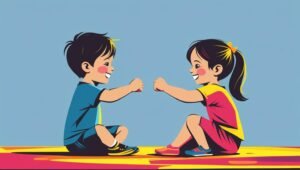
Experience:
I had a child in my care once—let’s call him Alex—who was happiest building train tracks in a quiet corner, perfectly content with his own company. While the rest of the group buzzed with block collaborations and dramatic play adventures, Alex preferred parallel play and politely stepped away any time I gently suggested joining others.
Now, parallel play is completely normal in preschool. But as time passed, I noticed that Alex wasn’t just choosing solo play—he was avoiding connection. And I started to wonder if, without support, those early disconnections might make it even harder for him to build friendships later on.
That’s when I leaned into a program I already loved: Peace of Mind. (More on why I’m such a fan in another post!) One of its components is Kindness Pals, where children are paired with a new peer each week for a short, intentional social moment. It’s simple, but powerful. Partners sit face-to-face, knees touching knees, and begin with a warm greeting—whether it’s a wave, a handshake, or a giggle-filled high five. Then they’re given a small task or a guided question to talk about.
At first, Alex was hesitant. He sat stiffly, barely making eye contact. The first time he participated, he whispered his name and quickly looked away. But we kept going. Week after week, a new partner. A new opportunity. No pressure—just consistency, kindness, and connection in bite-sized pieces.
And then, something shifted.
One morning, Alex and his partner were asked to build something together with play dough. I watched from across the room as he looked up and said, “Let’s make a spaceship.” His partner nodded. They got to work—talking, shaping, laughing. And just like that, he wasn’t on the outside anymore.
From then on, I saw him starting to initiate small interactions during play—offering a block, asking a question, joining in with others.
The Kindness Pals routine gave Alex a bridge to cross into the world of friendship—one little interaction at a time.

Assertiveness
Assertiveness is the preschooler super skill of saying what you need without turning it into a shouting match or a dramatic flop on the floor. It’s the ability to express thoughts, feelings, and boundaries in a way that’s respectful but confident—like saying, “I don’t like that,” or “Please stop,” instead of pushing, grabbing, or hiding under a table. For young children, learning to be assertive (not aggressive) is a big step toward developing autonomy and reducing peer conflict. It helps create more balanced, respectful social interactions where everyone gets a voice—even the quiet kids who usually just go along with whatever game is happening (Denham et al., 2003; Guralnick, 1999). Bonus: it also helps prevent a whole lot of glitter glue-related drama.
Ways to encourage children to stand up for themselves:
- Role-Playing Scenarios – Practice scripts for standing up for oneself (e.g., “I’m still using that” or “I’d like a turn too”).
- Feelings Posters – Help children identify and label their own emotions so they can express them confidently.
- Empowered Choices – Offer controlled choices (e.g., “Do you want to sit next to Maya or Jordan?”) to encourage confident decision-making.

Experience:
In every preschool room, there are those unmistakable sounds that cut through even the busiest morning—the reaction scream. You know the one. It’s loud, sudden, and usually makes every adult in the room wince and whip their head around.
When I joined this particular classroom, there was one child—let’s call her Maya—who let out an ear-piercing scream anytime something even slightly unjust happened. Someone bumped her tower? Scream. Took the scissors she was eyeing? Scream. Looked at her snack the wrong way? Scream.
At first, I observed how the team responded. They were calm and caring, but the focus was always on solving the trigger—“Give the scissors back,” or “You need to wait your turn.” No one really talked about the scream itself.
So the next time it happened—Maya howling over a scissor dispute—I knelt down, made eye contact, and asked gently, “What does that mean?”
She blinked at me, caught off guard, and finally said, “He took my scissors.”
“Ah,” I replied. “I thought you were really hurt. That scream made it sound like something big happened!”
Then I offered her some tools: “Next time, try saying, ‘Stop taking my scissors—I’m still using them,’ or ‘Can I have them back, please?’ That helps people understand what you need.”
Of course, the screaming didn’t stop overnight. Old habits take time to unlearn—especially ones that work so well at getting attention. But each time it happened, I stuck with the same calm cue:
“I don’t understand that sound—can you try telling me what you need?”
Or sometimes just, “Hmm… try again.”
Slowly, Maya began using her words. Not always perfectly, not always the first time—but she started thinking before reacting. And eventually, the screaming faded away.
She still had big feelings (don’t we all?), but now she had the tools to express them. And let’s just say, my ears were very, very grateful.

Supporting the development of social skills in young children isn’t just about creating a more peaceful classroom (though fewer snack-time arguments is definitely a perk). It’s about laying the groundwork for empathy, self-regulation, and the kind of social confidence that helps children thrive well beyond preschool. Through guided play, thoughtful role modeling, and a lot of patient repetition, educators and caregivers play a key role in helping little ones grow into kind, capable, and socially savvy humans (Denham et al., 2003). Bonus: it also makes it slightly less likely that someone will yell “You’re not my best friend anymore!” across the room during group time.
This wraps up our deep dive into Emotional Intelligence in preschoolers—what it looks like, why it matters, and how we can help nurture it, one gentle nudge (and deep breath) at a time. I’ll be continuing to explore other areas of early childhood education, developmental domains, and of course, sprinkling in plenty of real classroom stories and some of my own (very likely relatable) adventures as an early years educator. Because let’s be honest—behind the crayons, there’s always a story.

Signing off with high-fives, kind words, and just a hint of glitter on every surface. May your next group project end in teamwork, not tears. See you behind the crayons!
— The Teacher Behind the Crayons
💬 I’d love to hear from you! Have you had a “pause and breathe” moment with your little learners? Or maybe a funny story about a fire drill and a glitter explosion? Share your thoughts, questions, or classroom wins in the comments below—let’s keep the conversation going.
References
Beaty, J. J. (2014). Observing development of the young child (8th ed.). Pearson.
Blair, C., & Raver, C. C. (2015). School readiness and self-regulation: A developmental psychobiological approach. Annual Review of Psychology, 66, 711–731. https://doi.org/10.1146/annurev-psych-010814-015221
Brownell, C. A., Svetlova, M., & Nichols, S. R. (2013). To share or not to share: When do toddlers respond to another’s needs? Infancy, 18(6), 905–924. https://doi.org/10.1111/infa.12060
Denham, S. A. (2006). Social-emotional competence as support for school readiness: What is it and how do we assess it? Early Education and Development, 17(1), 57–89. https://doi.org/10.1207/s15566935eed1701_4
Denham, S. A., Blair, K. A., DeMulder, E., Levitas, J., Sawyer, K., Auerbach–Major, S., & Queenan, P. (2003). Preschool emotional competence: Pathway to social competence? Child Development, 74(1), 238–256. https://doi.org/10.1111/1467-8624.00533
Eisenberg, N., Spinrad, T. L., & Morris, A. S. (2006). Empathy-related responding in children. In M. Killen & J. G. Smetana (Eds.), Handbook of moral development (pp. 517–549). Psychology Press.
Guralnick, M. J. (1999). Family and child influences on the peer-related social competence of young children with developmental delays. Mental Retardation and Developmental Disabilities Research Reviews, 5(1), 21–29. https://doi.org/10.1002/(SICI)1098-2779(1999)5:1<21::AID-MRDD4>3.0.CO;2-O
Hartup, W. W. (1992). Having friends, making friends, and keeping friends: Relationships as educational contexts. Early Childhood Research Quarterly, 7(3), 307–329. https://doi.org/10.1016/0885-2006(92)90008-M
Howes, C. (1987). Social competence with peers in young children: Developmental sequences. Developmental Review, 7(3), 252–272. https://doi.org/10.1016/0273-2297(87)90014-1
Ladd, G. W. (2005). Children’s peer relations and social competence: A century of progress. Yale University Press.
Ramani, G. B., & Brownell, C. A. (2014). Preschoolers’ cooperative problem solving: Integrating communication, cognition, and social skills. Child Development, 85(5), 2049–2064. https://doi.org/10.1111/cdev.12248
Rubin, K. H., Bukowski, W. M., & Parker, J. G. (2006). Peer interactions, relationships, and groups. In N. Eisenberg (Ed.), Handbook of child psychology (6th ed., Vol. 3, pp. 571–645). Wiley.
Shure, M. B. (2001). I can problem solve: An interpersonal cognitive problem-solving program. Research Press.
You May Also Like
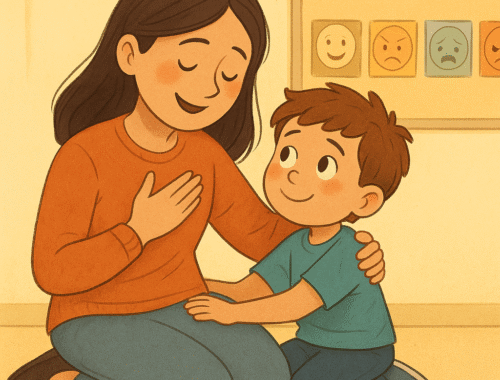
👀 I See You – A Story About Slowing Down and Looking Closer
June 25, 2025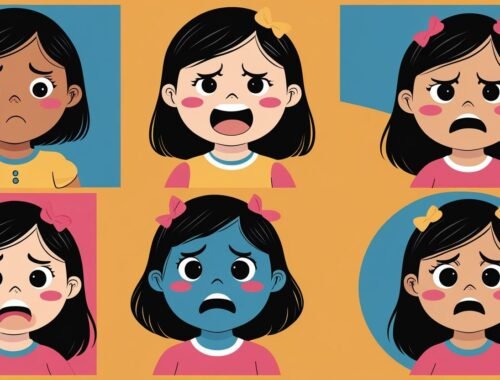
Emotional Intelligence: Teaching children to Recognize and Label Their Emotions
June 18, 2025